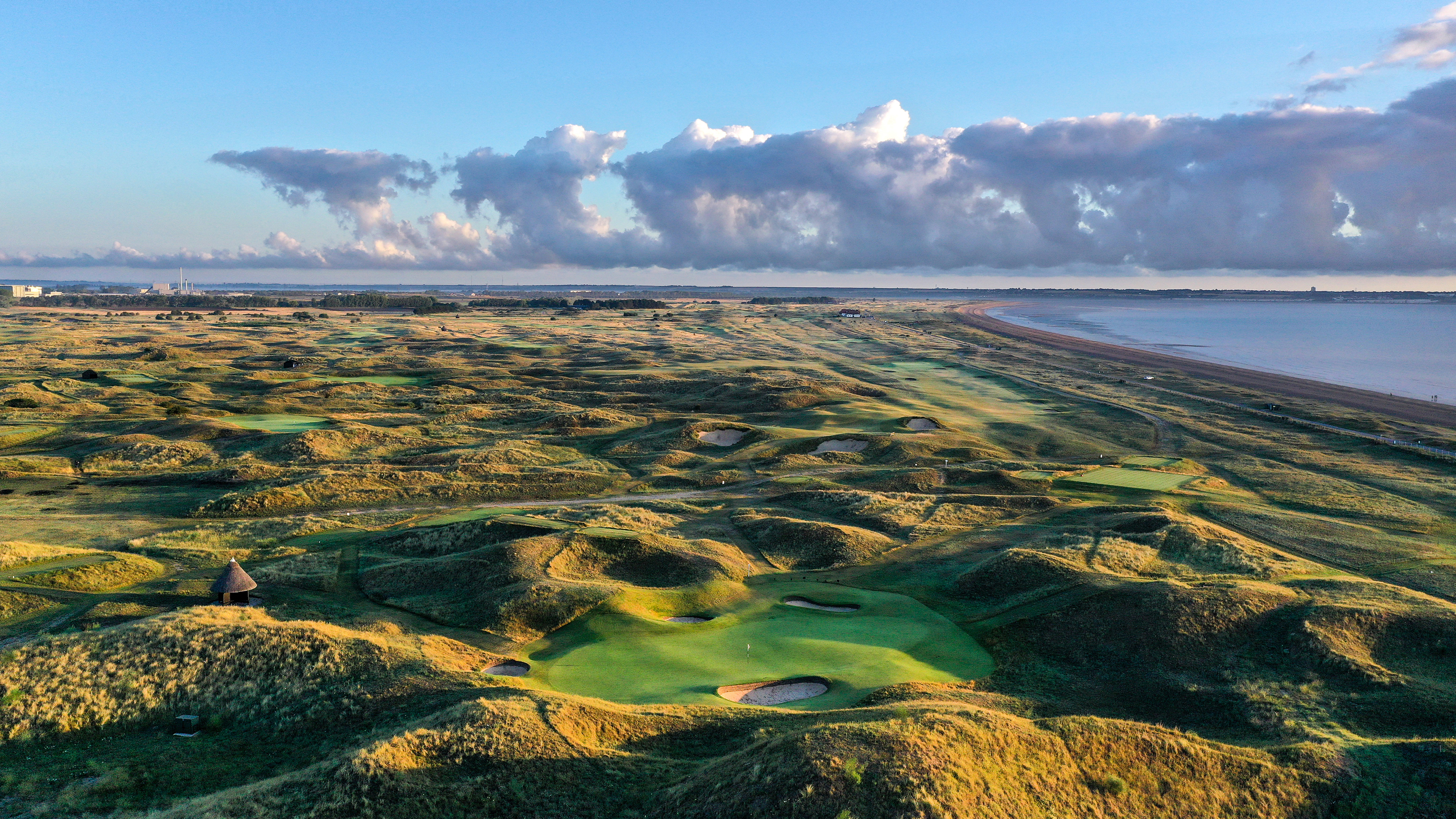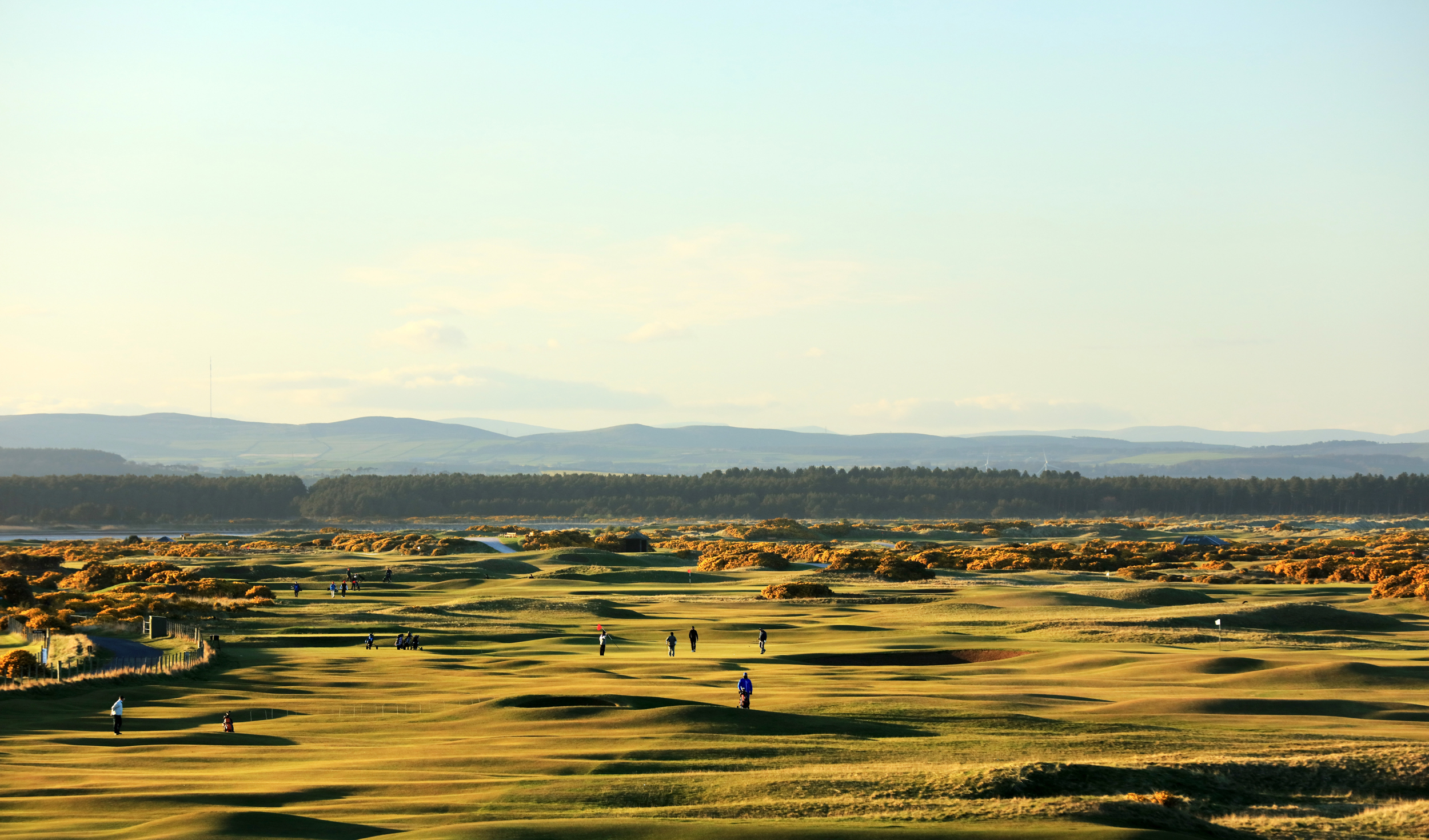Why Are Links Courses Drier Than Inland Golf Courses?
Links golf courses remain more playable in winter than most inland courses as they stay drier. We consider why this is the case.


The game of golf as we know it began on the east coast of Scotland. The earliest protagonists played rudimentary “courses” carved out on the narrow strip of land connecting the sea to the arable farmland. This “links” land provided ideal conditions for golf – wonderful undulating terrain populated by hardy bent and fescue grasses. The links remains where many of the UK and Ireland’s finest golf courses are found and links golf is viewed by many as the purest form of the game.
As it’s by the sea, the links land is sandy and firm. It’s exceptionally well-draining and wonderful to play golf shots from and across. Even after a mighty deluge, a links course will dry out quickly. The playing conditions are extremely consistent. Even through the winter, the surfaces continue to drain and remain reasonably fast-running.
This is why links courses offer such great playing opportunities in the winter. On a good day (and there will be plenty of bad ones), you will encounter excellent playing conditions and will likely be paying a significantly reduced rate. Links golf in the winter delivers some of the best value golf this country has to offer.
The sandy soil is a key reason why links courses remain so dry. In comparison, most inland courses have very different conditions under foot. Parkland courses in particular will tend to have clay or silt soils that will not drain so effectively and become more easily waterlogged.
There are inland courses with sandy soils, for example those found on the heaths – Heathland courses tend to remain drier through winter, much like a links.

St Andrews Old Course
There are other factors that keep links courses drier through the winter. The wind that whips the coastal areas helps to dry the surfaces. Average inland wind speeds are lower, so inland courses don’t benefit as much from this drying effect. In addition, the coastal air temperature tends to be slightly warmer than inland areas in winter meaning fewer frozen pockets that thaw and soak the ground.
Related: How to play golf in the wind
Get the Golf Monthly Newsletter
Subscribe to the Golf Monthly newsletter to stay up to date with all the latest tour news, equipment news, reviews, head-to-heads and buyer’s guides from our team of experienced experts.
Links courses are set on open ground so when the sun is up it hits most of the playing surfaces, helping to warm and dry them. Many inland courses are tree-lined meaning there are sections that never see the sun during the winter months – they stay cold and wet. Another problem with the trees surrounding inland courses is the leaves that shed and cover the playing surfaces. Despite best efforts by greenkeepers, they will inevitably tend to accumulate and create wet areas as they decay.
The east coast of this country benefits from a “rain shadow”. As the predominant weather comes from the west, much of the moisture is lost from the air by the time it has travelled across the higher ground in the middle of the country. This means links courses on the east coast see less rainfall than courses on the west and in the central parts of the country.
As mentioned, there are many inland courses that remain dry through the winter (heathland and upland courses for example,) but a general rule of thumb is that links golf courses are drier than inland courses.

Fergus is Golf Monthly's resident expert on the history of the game and has written extensively on that subject. He has also worked with Golf Monthly to produce a podcast series. Called 18 Majors: The Golf History Show it offers new and in-depth perspectives on some of the most important moments in golf's long history. You can find all the details about it here.
He is a golf obsessive and 1-handicapper. Growing up in the North East of Scotland, golf runs through his veins and his passion for the sport was bolstered during his time at St Andrews university studying history. He went on to earn a post graduate diploma from the London School of Journalism. Fergus has worked for Golf Monthly since 2004 and has written two books on the game; "Great Golf Debates" together with Jezz Ellwood of Golf Monthly and the history section of "The Ultimate Golf Book" together with Neil Tappin , also of Golf Monthly.
Fergus once shanked a ball from just over Granny Clark's Wynd on the 18th of the Old Course that struck the St Andrews Golf Club and rebounded into the Valley of Sin, from where he saved par. Who says there's no golfing god?
-
 Justin Thomas Confirms Stand-In Caddie Will Not Replace Long-Term Looper After First Victory Since 2022
Justin Thomas Confirms Stand-In Caddie Will Not Replace Long-Term Looper After First Victory Since 2022Thomas won the RBC Heritage with Max Homa's former looper, Joe Greiner as his assistant but is looking forward to welcoming his regular caddie back soon
By Jonny Leighfield
-
 Rose Zhang Ruled Out Of Chevron Championship
Rose Zhang Ruled Out Of Chevron ChampionshipThe American hasn't featured in a competitive event since withdrawing from the T-Mobile Match Play, with it reported that Zhang will miss the Chevron Championship due to an ongoing neck injury
By Matt Cradock